#emphasizes how young he is during all of this. kid still has braces.
Explore tagged Tumblr posts
Text
Society if Ephemer had braces
#Rosie rambles#sorry he just. he should have them#both for awww cute :) reasons and also#emphasizes how young he is during all of this. kid still has braces.#probably had em from before he got a keyblade (bc i dont see any orthodontists in daybreak town)#the bands would be red to match his scarf i think.
24 notes
·
View notes
Text
Brace Yourselves, I have THOUGHTS on this guy
Okay so I just watched Wizards (Tales of Arcadia) and I, along with many other folks, adore one (1) wizard in particular--Hisirdoux Casperan, better known as Douxie. I’m sure you’ve seen the art, the posts, and, well, the internet lately.
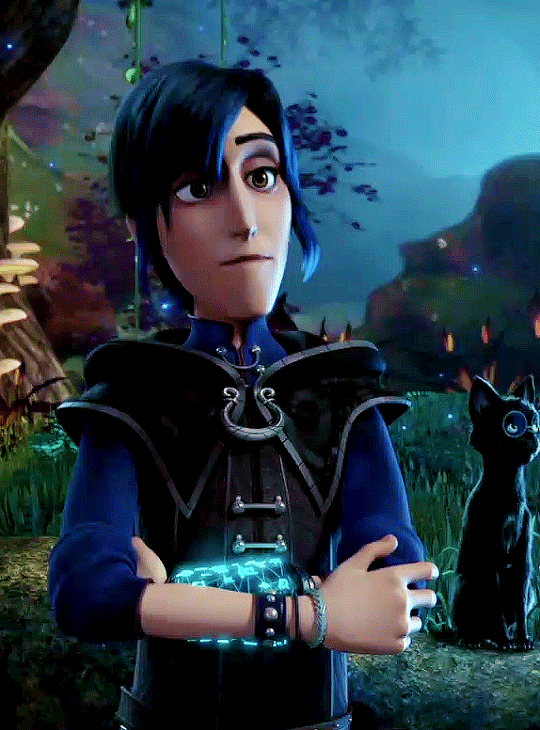
BUT HERE’S THE THING. One of the (many) reasons I love this guy. He’s not what one typically gets in a main character, AND he’s very different than other protagonists we’ve met in Arcadia.
TLDR: Protective, kind-as-summer, ultimate “good older brother vibes” wizard who simultaneously 1) doesn’t think much of himself, 2) tries his hardest, and 3) is actually SUPER FREAKING POWERFUL is unique and I love him for all those reasons and more!! (Details (and spoilers) below the cut)
1: He’s young, yes, but he’s extremely experienced. He looks 19, but is 919. As the first episode shows, he’s been doing his best to live a good life and master magic for NINE CENTURIES. All the while looking like a kid! Douxie lived through the fall of Camelot, has seen technology blossom and evolve, AND has seen countless people come and go, all the while completely on his own except for Archie.
2: He’s extremely humble. He’s apparently been working odd jobs FOR ALMOST A MILENNIUM--so he can work from the shadows to protect people from terrors they don’t even know about--and works hard AT ALL OF IT. Menial jobs AND demon-fighting. First episode, he clearly WANTS to use magic to clean up the cafe (and as a former customer service worker I would have sold my wisdom teeth for magic, LET ALONE magic clean-up help!) but he refrains from doing so, because he really took Merlin’s advice to heart.
(Side note: IMO, Merlin’s an ASS. But the advice he gives in the beginning of “Wizards”--along the lines of “Relying on magic alone isn’t enough, first you have to master how to live well and THEN you can master magic, hard work is extremely important and not to be skipped”--is good. AND DOUXIE STICKS WITH IT FOR OVER 900 YEARS. OF HIS OWN VOLITION. Merlin’s in a tomb, he hasn’t been glaring over Douxie’s shoulder all this time!) Which brings me to-
3) Douxie, although a hard worker, sincerely good guy, and all around badass wizard, doubts himself a LOT (thanks Merlin’s endless snarking and yelling.) BUT, instead of always fighting/planning to get Merlin to approve of him, Douxie instead focuses on doing the right thing. But it isn’t easy and Merlin’s dismissal of him/his ideas/Merlin’s constant disparaging put-downs hurts him. But he doesn’t let it stop him.
4) Douxie CARES. A LOT. He’s patient, kind, eager to help, works hard, and has protected humanity from horrors it didn’t even know about for CENTURIES. While he was still an apprentice, with no master, and no other magic users (that we’ve really seen) that could teach him more about his own magic or how to use it. The hedge wizards are cool, but we don’t get to see much of them and it looks like they’re more of a side society in Arcadia than something Douxie’s strictly a part of.
5) Douxie protects whoever he can whenever he can. To him, all life is precious, and he gives off major “is anyone else protecting this person or trying to make things better okay cool cool cool, I’m gonna try to do that as much as I can for as many as I can right now!” attitude. Which gives off major older sibling vibes to me.
(To emphasize, he cares about EVERYONE. He’s distraught at the thought of Arthur’s death, HE’S the one who uses his magic to remind--not enchant, REMIND--Arthur and Morgana of their old love of the forest and of Gwen (apparently the glue that held their trio together) and how, each in their own way, they miss her and still love each other. HE’S the one who’s constantly checking the time continuum, and keeps trying to tell Merlin that it doesn’t have to be Arthur vs. Morgana. But Merlin outright pushes him aside/ignores him, and events take their course. Interesting note: Right during the big fight scene in the past with Arthur vs. Morgana, just before Arthur cuts off Morgana’s hand with Excaliber and she falls to her death, you’ll notice the time continuum is blue. Which means it’s fine. The future is good. Douxie could go back to his future no problem. BUT WHEN HE SEES MORGANA’S DEAD FORM as part of the repaired timeline, HE SHOUTS AND RUNS TOWARD THEM TO TRY AND STOP IT. Morgana being DEAD didn’t mess up the timeline. Excaliber being broken did. But Douxie was still trying to save Morgana AND Arthur, and only the blast of magic from their fight knocked him back. And he still grieves her death as one of the parts of his failure, even while Merlin pushes him aside and focuses on Arthur and Excaliber in the aftermath of the battle.
6) Does anyone else think Douxie has a major guilt complex/super messed up self esteem? Because Douxie tearfully shouting “I’m so sorry! This is all my fault!” to Merlin, AS DOUXIE’S OWN LIFE IS IN DANGER AFTER HE TRIED TO SAVE HIS FRIENDS and keep the Arcane Order from destroying the world...that hit hard. His life is on the line and (most likely) his last words are a plea for forgiveness to the Master that routinely dismissed him as an incompetent idiot and was more than happy to leave teenagers (!TEENAGERS!) who’d fought and risked everything to protect the world to die horribly at the hands of his enemies. Douxie--caring, kind-hearted, I-get-my-ass-rountinely-handed-to-me-but-always-get-up-again DOUXIE was the one who ran back to get Jim and Claire. Not Merlin. Merlin was *this close* to leaving to protect Nari for the greater good, and only reconsidered because Douxie had thrown himself into the fray (and despite his best efforts got thrown hard into a rock wall by The Green Knight. And then volleyball spiked into the (equally hard rock) floor and crushed by MindControlledTrollJim.
7) Douxie DOES NOT GIVE UP. Merlin writes Jim’s injuries off as hopeless and him as a lost cause, but Douxie relentlessly tries to figure out ways to fix things. Arthur and Morgana’s relationship, Jim’s injury/worsening curse, all the scenarios where they (it looks like) have to choose between saving their friends AND the world. He doesn’t just shrug and write off losses the way Merlin does. Douxie keeps throwing himself at problems and putting himself at risk to solve them.
8) He’s honest. (Certain Lad of Fortune bowl games aside ;) ) Merlin only told Jim the problem with the wound and left it at that. Douxie makes sure that Claire knows the reality of the situation and promises he’ll find a way to fix it. He knows their situation isn’t ideal, but he refuses to just shrug and leave things as they are. He’s more than willing to throw himself wholeheartedly into finding a way to fix things and refuses to let defeat stop him. Which leads me to, finally--
9) Douxie willingly, without flinching or making a big deal about it, walks into the jaws of death for his friends and the world. For Pete’s sake, he does it with a SMILE. He KNOWS getting his friends back is a long shot. He KNOWS the Arcane Order cannot get Nari AND the Seals, or else the world is doomed--AND he could easily have chosen to go on the run, with the Seals, for the rest of his life. His friends would have died (or worse), Nari would have been trapped with the Order for the rest of time, but the world (and Douxie) would have been safe. Why? The Order doesn’t know he has the seals. Merlin said they could be FOUND if his staff was destroyed, he didn’t say they were STORED there. (And yeah, I wanted Douxie to trick the Order with fake Seals too, but after some thought I’d argue that they’re ancient and powerful enough where they probably wouldn’t have been fooled by or chased after a fake.) Also, going on the run with inanimate objects your hunters don’t know you have and having the kind of magic Douxie does--he could have had a niiiiiice life. Maybe a little mobile, but arguably MUCH easier than constantly making sure a small forest spirit doesn’t get snatched up by her angry brethren. In any case--
Douxie’s plan included--and even hinged on--his willingness to die buying his friends and Nari time to escape. He BUILT IT INTO HIS PLAN. And that bravery, courage, and matter of fact heroism--along with that defiant smirk he gives the Order when they threaten to kill him--is why I love this guy so much.
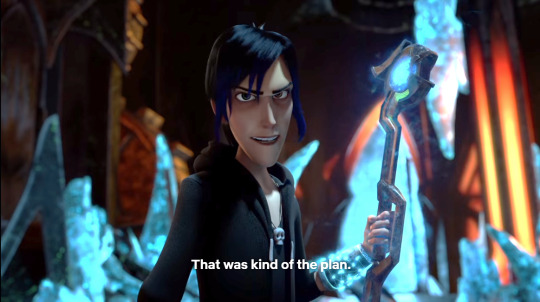
#douxie#wizards#tales of arcadia#toa spoilers#wizards spoilers#long post#but its about DOUXIE you guys#heroism#protectiveness
286 notes
·
View notes
Text
Culture, parallels & meta - S3 E1
Previous season Prologue: Vlogs (1) - Vlogs (2)
°
Zaterdag 21:43
The time lapse already showing us a string of places that will be important later, like the dark alley, the Meir with Noor’s workplace, the university neighborhood, the Scheldt river where the boys hang out, ...
Perfect parallel:
The second season starts Zoë’s POV with a (washing machine) door, whilst the third opens with a door to a party that Robbe attends.
Robbe glances back at Noor passing through the shot this episode, an action he repeats when he spots Sander in the second episode. - A very subtle hint to where his love life may lead.
The first one starts with two unknown LGBT+ girls kissing at a party, the last episode shows two known LGBT+ boys (Sobbe) kissing at their own party.
The aerial shot through the floor to introduce us to Robbe’s POV here and the aerial shot through the roof to say goodbye to him in the last episode.
Moyo saying “No one would do you” to Aaron in this episode, Aaron realizing “No one here wants to do me!” in the last.
Where’s Wally? Noor greeting Marie, accompanied by Jana and Britt. Max dancing with Keisha in the crowd.
How ‘meta’ of you: Newsflash, yes you are!
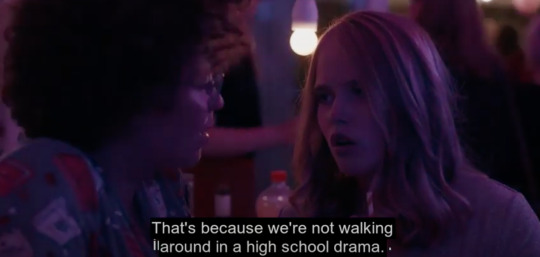
Nod to the OG:
The deliberate messy POV: following everyone that we know already and then slowly settling on the Isak version in a tub.
Robbe saying Noor looks like ‘Natalie Portman’, which is what people said to the OG Emma when they flirted with her. Everyone, except Isak, that is.
Oop, there it is, the homophobia / heteronormativity: Moyo keeps pressuring Robbe into explaining what type of girl he likes. The boys laugh it off when he answers that ‘he doesn’t have a type’.
Lost in translation: Moyo mocks Noor’s Dutch accent, making his ‘g’ and ‘st’ sound harsher, while also adding ‘hoor’ at the end - a typical word used by the Dutch to emphasize a point.
Blink-and-y’ll-miss-it: Jens is playing with the weed bag. Keisha is one of the girls that Moyo mentions as Jens’ ex-girlfriend or ex-fling. Not only did Noor nót flush the toilet, but she didn’t used any toilet paper either!
°
Zaterdag 22:44
C is for culture:
Noor rescuing Robbe on her scooter - In Belgium, you’re allowed to drive a moped or scooter once you’ve reached the age of 16. Nothing is needed if the vehicle doesn’t go above 25 km/h. If it stays between the range of 25-45 km/h and max. 50 cc, you need to pass a theoretical exam, 4 hours of driver’s ed and a practical exam to get the license. Anything other than that, has a whole new set of restrictions, types of driver’s licenses and minimum ages. Noor and Robbe are, however, still breaking the law. As long as you’re not 18, you’re not allowed to have an extra passenger with you. Especially if they’re not wearing a helmet. (Plus they ignored a red light. Those rebels!)
“You do know that you always have to have it with you?” - The Belgian law states that everyone above age twelve, has to get an ID to identify themselves. Some might have had a Kids-ID already - for travel purposes - but that’s not mandatory. However, once you're fifteen years old, you’re obligated to carry your ID with you at all times.
Perfect parallel:
Luca being all jealous whilst staring at Noor and Robbe making out in S3, her glaring at Maud and Robbe every chance she got in the last season.
Robbe and Noor having fun on the scooter while screaming and Robbe filming their adventure in this episode. Robbe and Sander doing a similar thing, but on their bikes in a later episode.
Wink to other remakes: Robbe sporting a brown jacket. (Eliott, anyone?)
Surprise bitch, guess who: It’s Willem Chanterie, the on-set costume designer and social media production assistant!
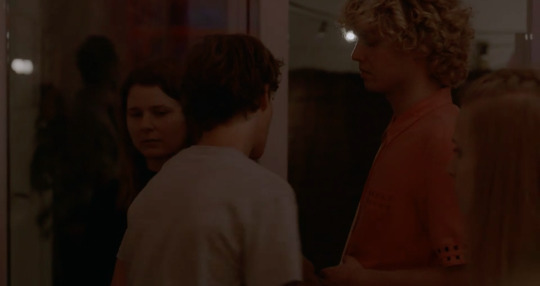
Blink-and-y’ll-miss-it: Noor has a ‘Fuck Trump’ sticker on her helmet. Robbe says “Hey, it’s red” in a very clear Antwerp accent.
°
Zaterdag 23:11
Hello from the outside: The garbage truck they sprayed, still drove around the city regularly. The art piece itself is named ‘#Genoeg mama' (= ‘#Enough mommy’). It blames the consumer society as toxic, making young people its victim.
Oopsie: Inside the graffiti den, Noor suddenly sports a tote bag with supplies, even though we never saw her wearing that in the previous shots.
Blink-and-y’ll-miss-it: Noor has black combat boots. The photographer is obviously Sander, in case you have missed that subtle clue.
°
Zondag 13:41
Lost in translation/Oop, there it is, the homophobia / heteronormativity:
“Check die pekie’s”. The word ‘pekie’ is actually Amsterdam slang for ‘beautiful girl, girlfriend’. In recent years, more and more Dutch slang are making their way into the Flemish dialect, because of the Dutch rap songs gaining popularity with the youngsters.
“Vamos, flikkers”. The word ‘flikkers’ can mean ‘wussie’ as well as a derogatory term for ‘homosexual’. Again establishing the fact that the boys use a lot of homophobic or toxic words for each other.
Robbe’s clumsiness meter: +1, him tossing the bag behind Jens instead of into his hands.
Blink-and-y’ll-miss-it: There is a football right next to the skateboards.
°
Maandag 16:04
C is for culture: “The whole art school was talking about it” -
Secondary school is divided in four sections: general, technical, art and vocational. Which section you choose can have effect on further education. In one of these sections, you pick what you want to study from your first to last year (‘directions’). That means that you have some courses purely focused on the direction and others that are obligated for everyone, regardless.
Art high schoolers can choose to go to work or study a specialization afterwards. Their coursework isn’t solely art based, there are general required courses too. That’s why some foreigners - including the Dutch - come to Belgium, since they’ll get a more rounded and higher level of art education than in their countries. ‘de!KUNSTHUMANIORA’ is the high school in Antwerp Noor goes to and is known for having students with unique styles.
Perfect parallel:
Noor waiting outside the school for Robbe and him reacting somewhat confused here, Sander doing the same and having an instantly happy Robbe in a later episode.
Robbe having no problem kissing a girl ‘as a straight guy’ in front of the gates in this episode and scared for what might happen if he kissed a boy ‘as a gay guy’ later on.
Blink-and-y’ll-miss-it: The insta caption underneath the art work says ‘An inspirational message on a Sunday! Just discovered this in Antwerp city today. Artist unknown... Can you remember when you last called on your mother?’ (That last sentence, oooofff, the symbolism!)
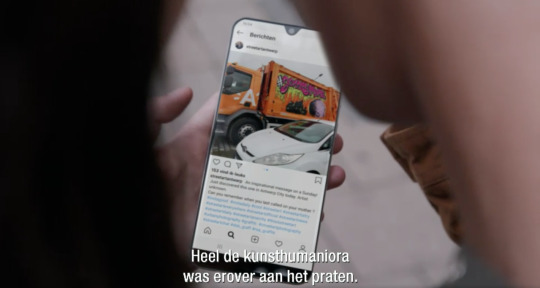
°
Dinsdag 14:57
C is for culture:
“Yes, mini enterprises are so chill.” - Mini enterprises are often used as a tool for Economics in the fifth/sixth year. The goal of these is to ‘learn whilst doing it’. Like the name specifies, mini enterprises are actual miniature companies set up by a group of students. During the school year, they’ll try to work together on commercializing a product. All aspects of entrepreneurship are at play here: writing a business plan, holding meetings, doing bookkeeping, marketing the product, produce and sell it, ... If the enterprise idea is good or well executed, it might even win a national prize by the company making this education formula.
“What if he contacts child protection services” - Actually, those services doesn’t really exist in Belgium. There are, however, other youth organizations for these types of things, like JAC - Youth Advice Centre, CLB - Centre for Student Guidance and the Centre for Mental Healthcare.
Perfect parallel: The boys hyping Aaron up to walk over to Amber and talk to her - yet he fails in this episode, them doing the same and he succeeds (after some fails) in the last episode.
Oop, there it is, the homophobia / heteronormativity: Jens saying “Damn, seems like someone is on his fucking period”, after Robbe snaps at him due to the difficult telephone call with his dad.
Lost in translation: Jens saying “Mijn kop staat er niet naar” (= “My head’s not standing there”) can actually mean different things: I’m not in the mood, it’s not the right time, I don't want to do it, my head’s all over the place, ... It depends on the context, on which interpretation would suit the situation the best.
Blink-and-y’ll-miss-it: The girls are all fawning all over Britt’s cellphone, so there is a good chance that they’re discussing (pictures of) her boyfriend, Sander. Also, Jana’s braces are gone!
°
Donderdag 17:13
Perfect parallel: Robbe stating that he can’t talk to his dad or he’ll fight and Zoë getting that, as she said a similar thing to an understanding Senne about her parents in S2.
How ‘meta’ of you: Ah, yes, fandom ship names in SKAM. We applaud!
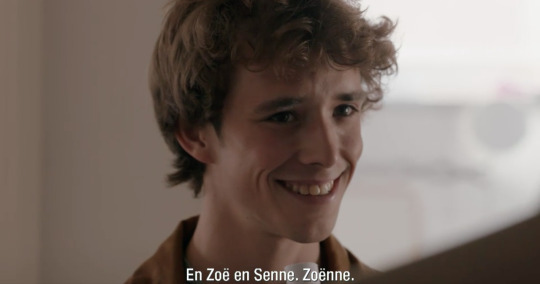
Oopsie: If you look really hard, you see that the body type and hair of Robbe’s dad, doesn’t correspond with the version waiting at the restaurant later on.
Wink to other remakes: This shot reminding you of a certain S3 trailer? 👀
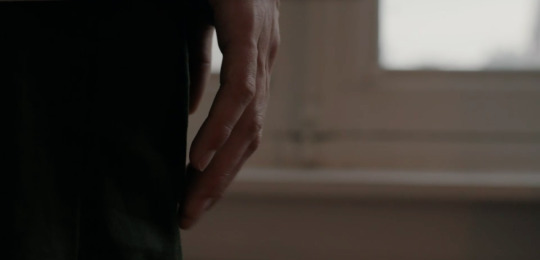
Blink-and-y’ll-miss-it: The numerous references to Zoënne’s relationship in their room (relationship pics, Senne’s guitar). The paper Milan gifts to Robbe is the written permission by his parent to live with them, as is obligated by law.
°
Vrijdag 20:04
Perfect parallel:
Senne pulling Zoë up after a kiss here, just like with their first kiss in S2.
Robbe pushing Milan away after thinking he wanted to kiss him at the party in S2, them hugging it out in after talking about it in S3.
Blink-and-y’ll-miss-it: Zoë and Milan making some healthy party snacks like cauliflower and cocktail sauce, cheese with tomatoes and salami squares. She pulls back the bottle of gin that Milan wants to steal. Senne also bought paprika and tortilla chips from Colruyt (a discount store).
°
Vrijdag 20:54
C is for culture: “Noor, Robbe’s girlfriend” - (Teen) dating culture is different in Belgium. Usually, if you have kissed, hung out, texted or just said/did something to show your mutual interest, you’d pretty much consider yourself in a relationship. It can go from 0 to 100 very quick. Unless there is, of course, an agreement that what you’re doing is no such thing. Also, nobody really ask you to be their gf/bf. It just implied or stated to their family or friends.
Perfect parallel:
A reluctant Robbe pushing himself to do stuff to Noor (playful dancing, kissing, riling her up) as far as putting his hands on her bra here. A totally different, excited Robbe not even thinking twice about doing these things to Sander, even licking his nipple during their reunion.
Noor pushing Robbe on the bed and climbing over him, whilst Robbe looks all sad in this episode. Him pushing Sander on the bed and being happy as Sander crawls over him during their reunion.
Oop, there it is, the homophobia / heteronormativity: Robbe tries to convince himself into liking heterosexual sex with Noor and fake laughs with his friends about having it.
Where’s Wally? Keisha laughing with Amber and later dancing with Marie.
Blink-and-y’ll-miss-it: Jens is talking to Senne. The decorations behind Milan saying ‘Welkom Robbe’ (= ‘Welcome Robbe’). Noor has a beautiful tattoo of a pin-up girl covered with butterflies on her lower arm.

124 notes
·
View notes
Text
How have Society’s Views on Body Images Changed over the Years?
(Before I get into it, this is an essay I wrote for my college class surrounding the effects of social media. For my project, I decided to talk about something that has affected me in the past. Personally, social media has changed the way I view my own and other’s bodies. I used to compare myself to everyone I saw, but over time, I have learned that media can make everyone’s life look like a dream. I am very happy with my body, and I know that social media helped me a lot along the way of self-acceptance. This essay is very long (8 pages on Google Docs!) but I believe my research to be very interesting, and I hope you do too. TW for mentions of eating disorders.)
Body images have been affecting women around the world since 3,500 years ago. Women tried to perfect their image for the time period they lived, whether it be the image focusing on large, fertile women during Prehistoric times, the curved hips of the later 1900s, or the dangerously skinny body the 21st century now depends on. In modern society, there is nothing that matters more to young adolescent girls than their body image. Citizens see the ideal sizes in ads in public transportation, Barbie dolls, and in social media. The archetypal body has been attempted by many women. Many turn to eating disorders such as anorexia nervosa or bulimia to achieve this ideal schema. Society is beginning to realize that all sizes are beautiful and women shouldn’t feel pressured to fit into these standards. Over the past hundred years, society’s views on women’s bodies have shifted from favoring those who have bigger bone structures to having dangerously low BMIs. These unrealistic expectations have led to many girls struggling to find peace with their body, and have made society fail to see its beauty.
Since Ancient Egypt, women have attempted to obtain the ideal body images of their times. Although their ideal image is drastically different from what humans today strive towards, the notion of struggling to fit in with society stayed the same. Before the 1900s, the concept of body images was easily demonstrated in the artwork from the past, such as in the Prehistoric times, for example. Cichon-Hollander analyzed the Venus of Willendorf, a famous sculpture dug up by Joseph Szombathy. In this artwork, he saw a rather plump-looking woman. The woman had a round stomach, was disproportionate, and had an emphasis on her reproductive organs. Hollander also examined Egyptian artwork that portrayed a new fashion sense and body image that wasn’t seen before in Egypt. These women wore dresses and jewelry to accentuate their petite bodies. Ancient Greece put a large emphasis on a proportionate and symmetrical body. This ideal beauty was based on the mathematical basis of the parts adding up equally to the whole (Cichon-Hollander). In the Late Middle Ages, women were once again bearing large stomachs that almost made it look like every woman at the time was pregnant. Even though they had big stomachs, the rest of their bodies remained slim. The rest of the women had petite legs and a slim, curved figure (Cichon-Hollander). Many of these ideas stray from the expectations of women’s bodies today. While the Prehistoric times preferred larger women, we now see bigger women and make fun of and pity them. In Ancient Egypt, most of the women also had their heads shaved. Today, most women have long, healthy hair, as being bald is seen as too masculine to many people. Ancient Greece’s ideals have greatly influenced what we admire today. We enjoy looking at those with symmetrical faces and bodies, just like the Greeks did. We believe those with asymmetrical bodies look awkward and uncomfortable. The Late Middle Ages emphasized women with large stomachs, and now we have fitness programs and unique diets to receive a flat stomach. Even though all of these beauty standards are unique to their culture and time period, they all still were ideals that women would struggle to meet. The need to fit in outranks many women’s attempts to be satisfied in their own bodies, even over three thousand years ago.
After the 1900s, women focused heavily on slim bodies and having the perfect shape. In the 1910s, women had a figure-eight body with a cinched corset. Ideal women were known as Golden Girls and were tall, regal, and mysterious. When the next time period came along, it called for fewer curves and more legs. The switch from the 1910s’ tall, mysterious girl to the flappers of the Roaring Twenties examined extreme weight loss and the dependence on corsets. Flappers were constantly in motion in their shiny small dresses. During this time, the Miss America pageant was made, and Margaret Gorman was crowned the first Miss America in 1921 (Hart). The Thirties called for the return of the waist and the fashion was tailored to accentuate their new curves. However, it still kept the skinniness in the stomach and legs. The later 1900s’ were when women really began to have negative feelings towards their bodies. Models and superstars’ skinny yet still curvy bodies were emulated by the women in America. The 1950s’ hourglass look called for curvy and rounded figures while keeping a skinny stomach. Most women would take supplements to fill out their curves. Marilyn Monroe was the woman most girls strived to become (Martin). She flaunted her curvy yet petite body to citizens. Throughout the Sixties, women considered thin back in. These girls were doll-faced, slender, and petite. Models like Twiggy showed women their beauty and made them envious. Around this time, girls and women alike began to hate their bodies more than ever before; feeling ugly because they didn’t have the exact body shape of their favorite models. Models in the 1980s’ felt the pressure of the beauty industry to preserve their body image in any way they could. Between 1960 and 1980, there were decreases in model’s weight and hip size, and an increase in their height, waist size, and bust size in Miss America pageants and Playboy centerfolds (Swami). Models from their specific time period felt the effects of society’s pressure to have the best body. In an article that examines the changes in body image through the 1900s’, Maria Hart found that most of the decades held something in common: toned legs and stomachs. The 21st century still values these things in society today. The history of idealized body images continues to repeat itself.
These unrealistic expectations for the perfect body image have been influenced heavily by our society and are extremely harmful to those determined to follow it. Citizens are introduced to striking bodily expectations everywhere you look and can be determined even by children. Young girls are introduced to impractical body images through the use of Barbies and other dolls. Picture the stereotypical Barbie doll; she has long legs, white teeth, a flat stomach, and curves in all the right places. Barbies were one of the first American dolls modeled with the teenage fashion, making the dolls a large visual attraction (Martin). As young children play with these dolls, they begin to see the idealized body image they believe they will have once they grow up. However, many of these kids will be devastated when their stomach isn’t as flat as their friends or their teeth grew back in crooked and now need braces. As these same girls grow to be adolescents, they will begin looking for new things to do, like watching television shows displaying the perfect body, and examining their favorite pop stars and models on the cover of magazines. Teenage girls reading fashion magazines are introduced to mass media’s perception of the body. Those that look up to models are also exposed to slim bodies and symmetrical faces that they may try to achieve. Americans are also able to look at models on their TV sets now, watching them attend large, extravagant parties while wearing a pair of $10,000 shoes. Streaming TV has been associated with dissatisfaction in body image for many Americans (Martin). Teenagers are going through a lot of bodily changes, which makes it hard for most of them to accept their bodies for how they are. Social media is the biggest source of adolescents examining body images. They look at photoshopped photos without realizing it’s not actually how their role models look. Some apps give people the ability to alter how they look by whitening their teeth and taking away blemishes. This gives teen unrealistic views from the people they’re following and will make them have self-doubt. What they don’t realize is that the person may have put on loads of makeup and editing tools to achieve their look (Makwana). Women obsess over getting enough likes or views on their social media platform, stating it makes them feel pretty, liked, and validated. Young girls, in particular, admit to feeling as if they lived through social media and not their real life. The results of being introduced to negative body images can greatly impact a woman’s confidence and optimism.
The perfect body is not achievable for most body types, which leads these expectations to be very harmful to society. There are many statistics that show terrifying results of young girls failing to see the beauty in themselves and their peers. Dove, a company that makes beauty and hair care, made a survey about body image in young girls and women. Their results came in and shocked many people. 42% of girls in first through third grade want to become skinnier, 81% of girls aged 10 are scared of becoming fat, and 2% of women of all ages would describe themselves as beautiful (Martin). It had been known that most girls have a negative view of their own bodies, but many failed to realize how early on girls began to start obsessing about their bodies. In a different survey by the Girl Scouts, 66% of girls were actively trying to lose weight, 33% had distorted views of their bodies, and 59% of girls are not satisfied with their bodies (Martin). Other surveys all state around the general lines that young girls already have an image in their head on what their body should look like, and how it differs from the one they have now. These ideas of how the body should look can lead to women turning to diets, working out, and other, much unhealthier methods to achieve their perfect body. Eating disorders are very common among women trying to achieve their idealized body image, especially models. Over the years, Miss America’s BMI has decreased over the years getting all the way to an astonishing 16.9. Many of the contestants had dangerously low BMIs that put their health at risk. The average body mass index for the average person is between 18.5 and 25.0. For women, the average is between 21.3 and 22.1 (Martin). 2008 Miss America winner Kirsten Haglund had a BMI of 16.29, which is severely low for a woman of her age. Haglund stated she was a recovering anorexic and used it to her advantage. She began using her platform to speak out on the dangers of eating disorders and how to help those who may be struggling. Haglund wasn’t the only person in the modeling industry to realize the dangers of maintaining the small body image; a fashion show in Madrid felt the effects of the harsh realities of keeping a slim body when many young models died from these expectations. In 2006, the fashion week in Spain banned models who looked dangerously skinny to try and preserve their health. The ban came after the model Luisel Ramos died of a heart attack right before stepping on the catwalk. Her body mass index was a startling 14.5. A little while after the death of Ramos, 21-year-old Ana Carolina Reston died with a BMI of 13.4 (Martin). Models in Madrid are now required to be examined by a doctor and will not be allowed to model in fashion week if they have a BMI lower than 18. Those thinking about joining the modeling industry should examine not only how their body feels, but also how their minds feel. Having a thigh gap is not nearly as important as being in good health, but society makes women pick and choose which one they will have. Unfortunately, most pick looking skinny. To try and avoid negative body images from the beginning, parents should try and take more time to examine the content they give their children to make sure they are getting a representation of not only the perfect body image, but of all body types in between. Parents should also look out for their children obsessing over what they eat and urge them to maintain a healthy lifestyle. If there is someone who seems to be struggling with their body image, people should try and help them in any way possible. This doesn’t mean they have to be the one to talk to them; they could turn to a trusted adult, like a parent or teacher. If that isn’t enough, the professional help of a psychologist or doctor may be for the best. By helping those in need, citizens make it known that they can and will all struggle together as a society, just as they will also bring each other up as a society.
The ideal body image of today is nothing like the one we earlier examined of the Prehistoric times, just like how today’s bodies may be nothing like those in a hundred years, or a thousand years. What will stay the same is women’s determination to maintain that body to fit in with their society. Unless someone takes the first stand and becomes confident with not fitting in the conformities our society holds, nothing will ever change. When women begin to embrace their bodies, they will be able to bring about great change. Already today there are women spreading the word on eating disorders and other mental health issues. Imagine what could happen if models weren’t just skinny if ads depicted larger women if people raised each other up instead of watching everyone fall. America has made drastic improvements, but who knows if it will be enough for future daughters and their daughters to love their bodies. If a person feels confident in their body, their body image is the one to envy; the image of someone who loves themselves and the skin they’re in.
Works Cited
Cichon-Hollander, G.W. “The European Ideal Beauty of the Human Body in Art.” Art History Archive, http://www.arthistoryarchive.com/arthistory/european/European-Ideal-Beauty- of-the-Human-Body-in-Art.html. Accessed 20 May 2019.
Hart, Maria. “See How Much the ‘Perfect’ Female Body Has Changed in 100 Years (It’s Crazy).” Greatist, 15 January 2015, https://greatist.com/grow/100-years-womens-body- image. Accessed 15 May 2019.
Makwana et al. “Magazine Issue 1 2018/Issue 35.” The Inquisitive Mind, http://www.in-mind. org/article/selfie-esteem-the-relationship-between-body-dissatisfaction-and-social-media-in-adolescent?gclid=CjwKCAjw8e7mBRBsEiwAPVxxiO4oDiD9acCaInp4RJHmglfodOjJIIM1HDmz6I0z02FUwu0es-1a_RoCOpQQAvD_B. Accessed 16 May 2019.
Martin, Jeanne B. “The Developmental of Ideal Body Image Perceptions in the United States.” Semantics Scholar, https://pdfs.semanticscholar.org/9baf/87fa41962e3454b6365c 2900f9202fb896ae.pdf. Accessed 17 May 2019.
Swami, Viren. “Women’s Idealised Bodies Have Changed Dramatically Over Time-But Are Standards Becoming More Unattainable?” The Conversation, https://theconversation. com/womens-idealised-bodies-have-changed-dramatically-over-time-but-are-standards-becoming-more-unattainable-64936. Accessed 15 May 2019.
1 note
·
View note